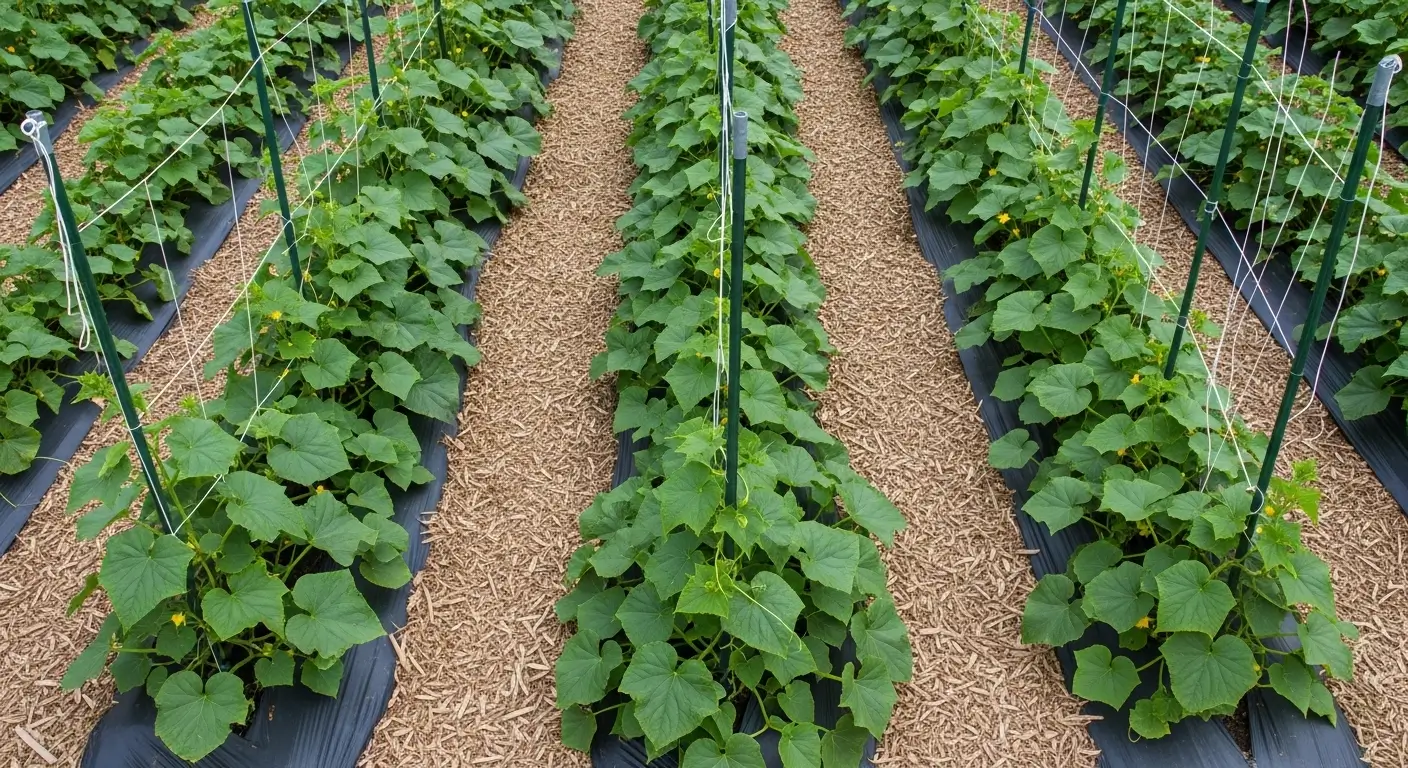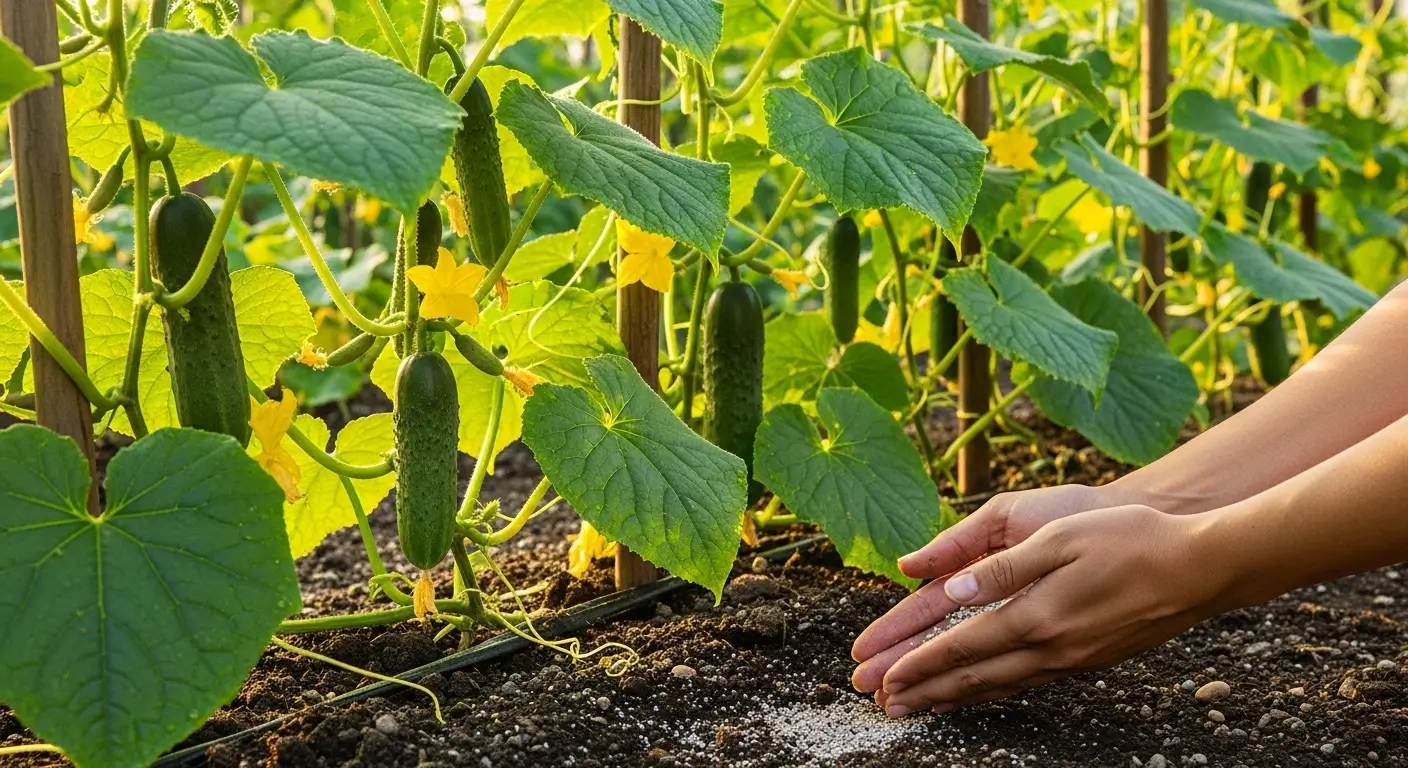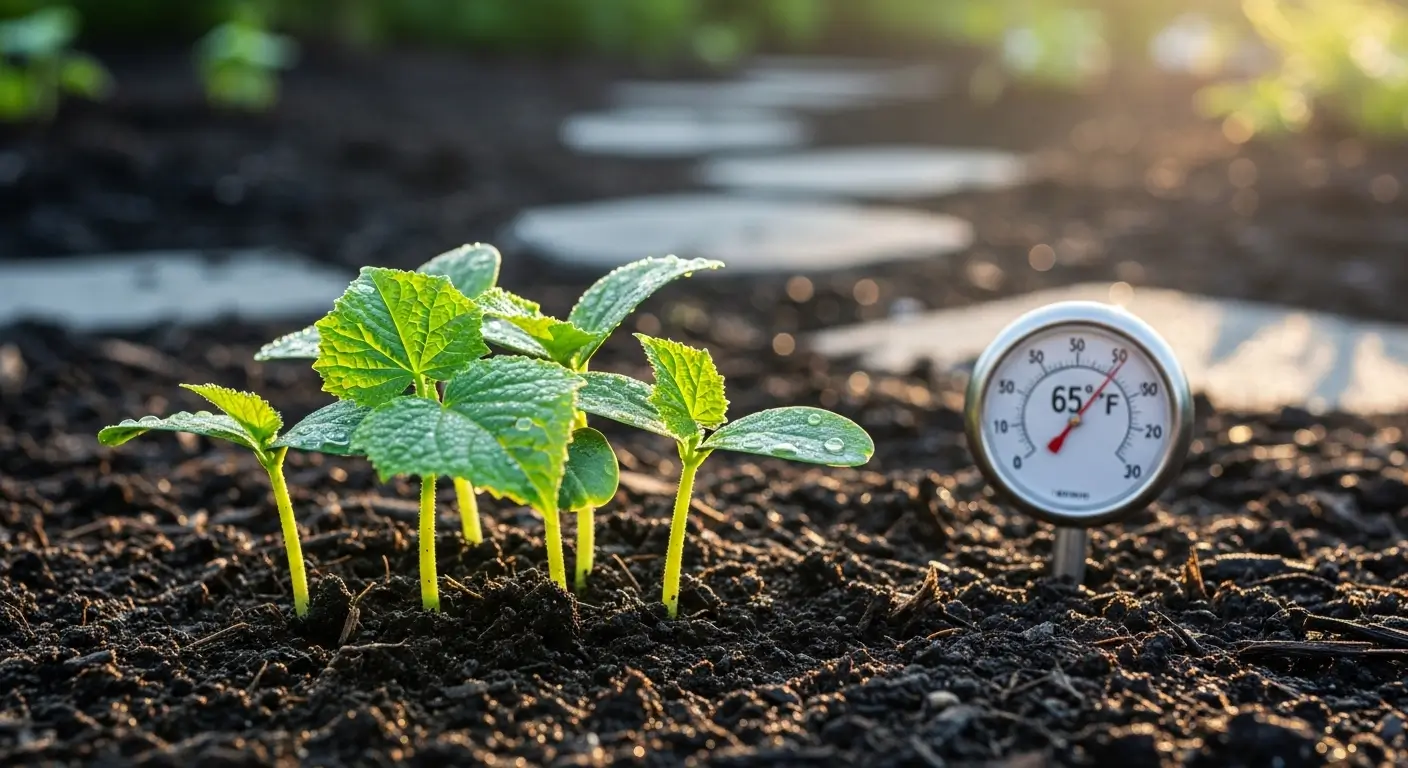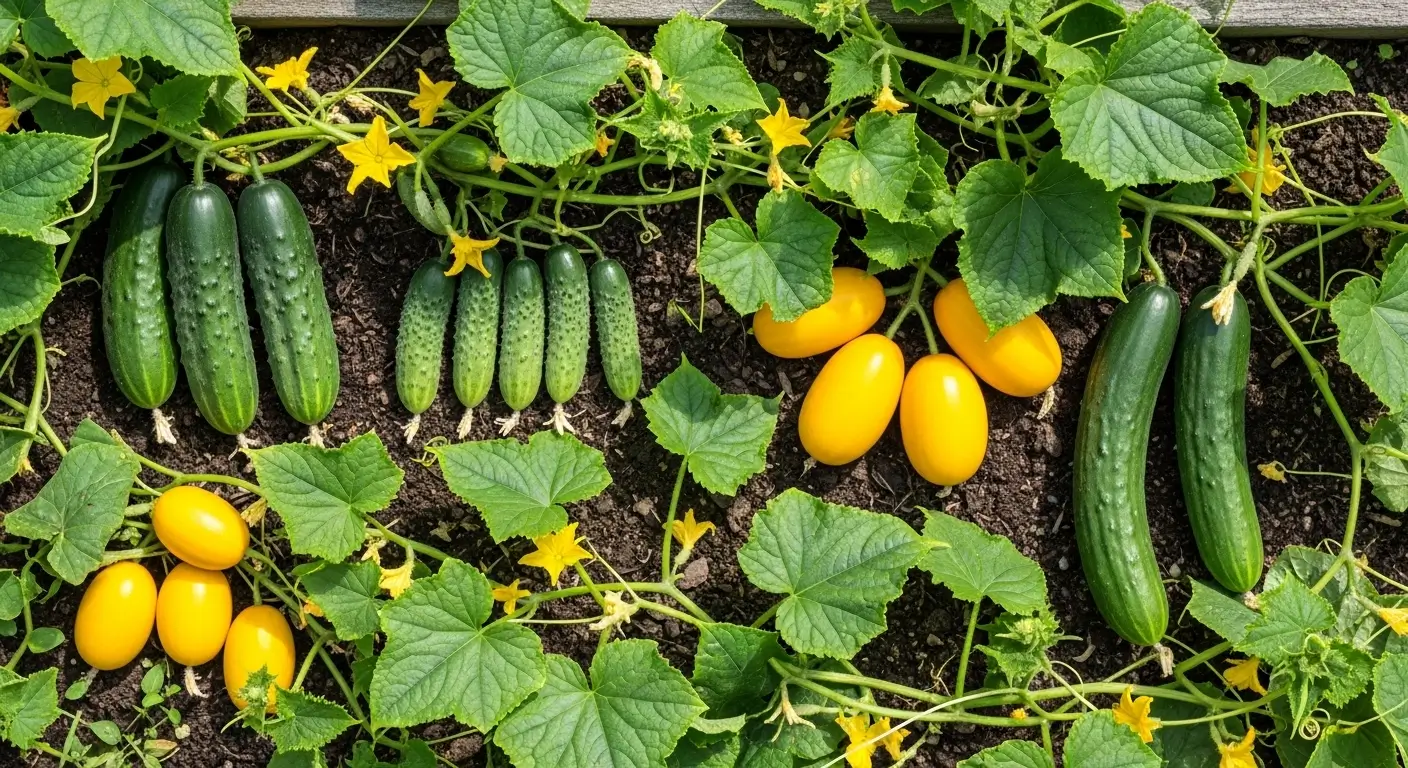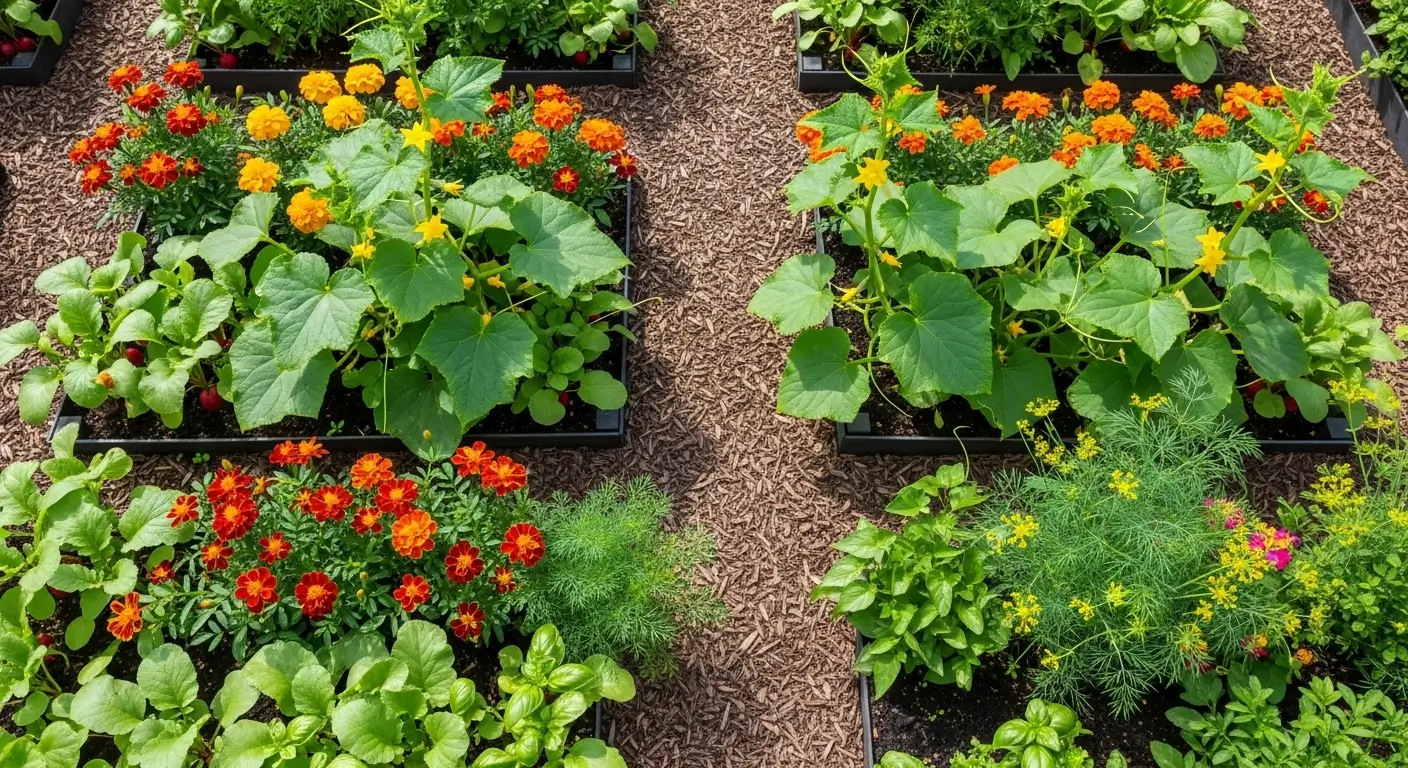Oh, hey there! So your cucumber plants are throwing a tantrum? Yeah, I’ve been there. After 15 years of dealing with these green divas in my Illinois garden, I can tell you one thing for sure – cucumbers have more mood swings than a teenager.
Just last month, I walked out to check on my cucumber patch and found what looked like a plant zombie apocalypse. Yellow leaves everywhere, mysterious spots, and one vine that gave up on life entirely. Fun times, right?
But here’s the thing – don’t panic! I used to think every yellow leaf meant plant death was imminent (dramatic much?). Still, most cucumber plant problems are totally fixable. Whether you’re staring at yellow cucumber leaves wondering what you did wrong, or dealing with some funky disease you can’t pronounce, I’ve got your back.
Table of Contents
Understanding Your Cucumber Plants: The Foundation of Problem-Solving
Okay, real talk – when I first started gardening, I had zero clue what my plants were trying to tell me. I’d see a yellow leaf and immediately assume I was the worst plant parent ever. Spoiler alert: plants are actually pretty chatty if you know how to listen.
Cucumbers are like friends who drop hints instead of telling you what’s wrong. They’ll show you how they’re growing through their leaves, and sometimes by looking generally sad and droopy. Most cucumber plant problems boil down to three things: they’re either too thirsty, too hungry, or some tiny bugs are having a party at their expense.
Look, I know it can feel overwhelming trying to figure out what’s wrong with your plants, especially when you’re staring at a bunch of symptoms that could mean different things. That’s why I put together this little diagnostic tool based on all the questions I get from fellow gardeners. It’s like having me right there in your garden with you! Just answer a few quick questions about what you’re seeing, and I’ll help you narrow down what’s likely going on.
🥒 Cucumber Problem Diagnostic Tool
Answer a few questions to identify your cucumber plant problems
What symptoms are you seeing on your cucumber plants?
Where on the plant are you seeing these symptoms?
How has your watering been lately?
Your Cucumber Problem Diagnosis:
Pretty helpful, right? Now that you’ve got a starting point, let’s dive deeper into the specific problems you’re most likely to encounter and exactly how to fix them.
The Most Common Cucumber Plant Problems (And What They Really Mean)
1. Yellow Cucumber Leaves: The Ultimate “Help Me” Signal
Ugh, cucumber leaves are yellowing. This is hands down the question I get asked the most at our local garden club. I swear, at every meeting, someone’s like, “Grace, why are my cucumber leaves turning yellow?!”
What’s Actually Going On: Sometimes your plant’s just shedding old leaves (totally normal, like us losing hair). But other times, those yellow leaves are basically your plant waving a tiny yellow flag saying “SOS!”
The Usual Suspects:
- You’re either drowning them or letting them die of thirst (yep, both make leaves yellow – plants are confusing like that)
- They’re hangry (not enough nitrogen)
- Some gross fungus moved in.
- They’re just getting old (happens to the best of us)
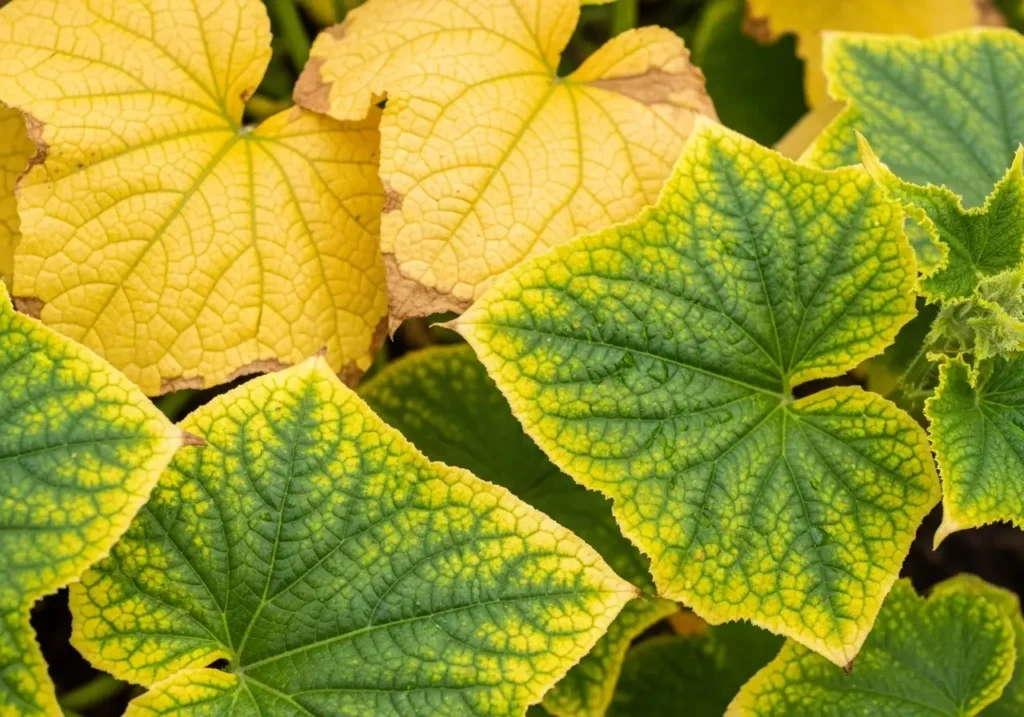
What I Actually Do: First thing – I stick my finger right into the soil about 2 inches down. Soggy? I need to chill with the watering. Dry as the Sahara? Time to step up my watering game. If the yellowing starts at the bottom and goes up, it’s usually water. They’re probably hungry if it’s doing this weird pattern between the leaf veins.
If you’re having trouble identifying exactly what’s causing your leaf symptoms, Cornell University’s cucumber diagnostic key with detailed photos can help you pinpoint the exact problem.
2. Bacterial and Fungal Cucumber Plant Diseases
Oh boy, let me tell you about my epic fail from three years ago. I noticed these tiny water spots on my cucumber leaves and thought, “Eh, no big deal.” Two weeks later? Half my cucumber crop was dead. I felt like such an idiot, but hey – live and learn, right?
Powdery Mildew: The Flour Explosion. This stuff literally looks like someone went crazy with a flour shaker on your leaves. It starts small but spreads faster than gossip in a small town. Pro tip: if you water your leaves instead of the soil, you’re basically rolling out the red carpet for this fungus.
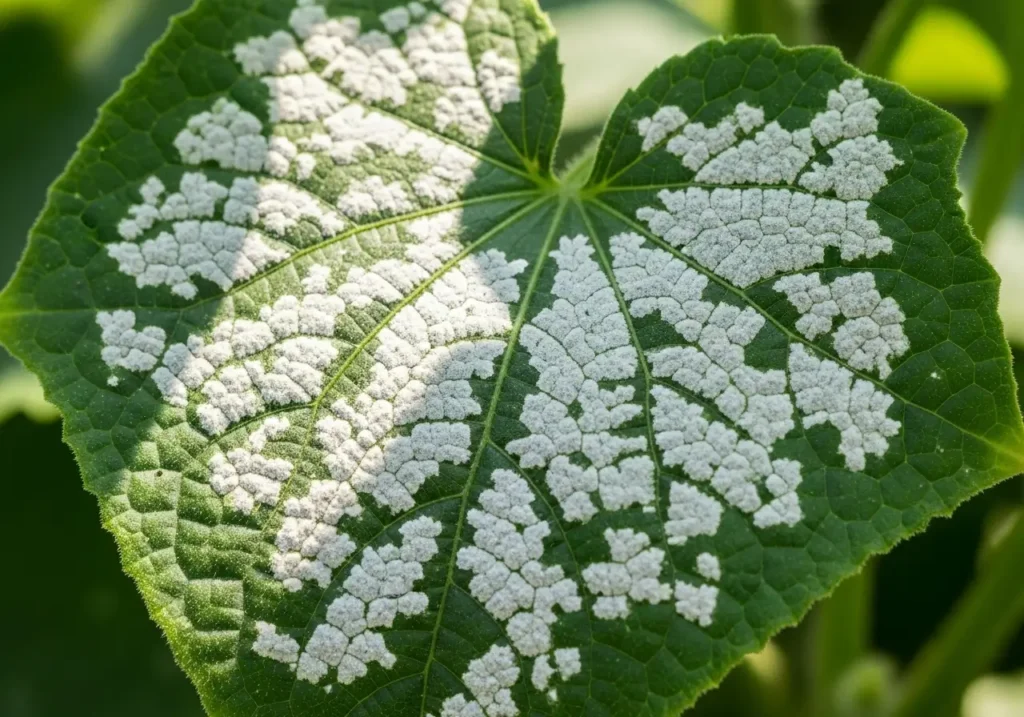
Downy Mildew: The Sneaky Yellow Spots. These little yellow spots show up; before you know it, they’re brown and crispy. The really gross part? There’s fuzzy stuff growing on the undersides of the leaves. This one loves cool, damp mornings – basically every spring day here in Illinois.
Bacterial Wilt: The Plant Serial Killer This is the scary one, folks. Your plants suddenly wilt and die like something out of a horror movie. The worst part? It’s spread by those evil cucumber beetles, which is why I’m obsessed with keeping those little jerks away from my plants.
How I Fight Back:
- Water the dirt, not the leaves (learned this one the hard way)
- Give plants space to breathe – cramped plants get sick faster.
- Move my cucumbers to different spots each year (crop rotation sounds fancy, but it just means don’t plant the same thing in the same place)
- Yank off any gross-looking leaves immediately and throw them in the trash (not the compost!)
3. Pest Problems That Pretend to be Plant Disease
You know what’s super annoying? Spending weeks trying to cure a “disease” only to find out tiny bugs are the real troublemakers. I’ve wasted so much time on this – don’t be like me!
Cucumber Beetles: The Tiny Terrorists. These little striped and spotted jerks are the absolute worst. They munch holes in leaves, spread diseases, and can totally destroy baby plants overnight. I started using row covers early in the season, and it’s been a game-changer. Seriously, best investment ever.
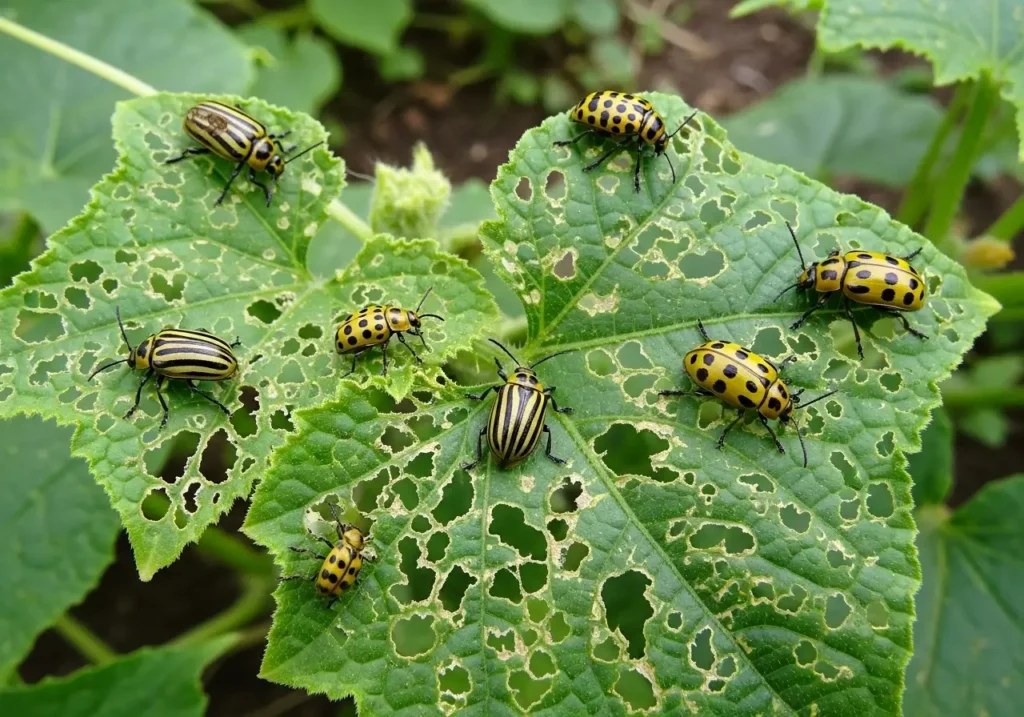
Aphids: The Annoying Little Vampires. These tiny green or black bugs love to hang out under leaves, sucking the life out of your plants. The good news? They’re easy to deal with. I blast them off with the garden hose or use some soapy water. Works like a charm.
Spider Mites: The Invisible Menaces If you see tiny webs and little yellow spots, congrats – you’ve got spider mites. These microscopic troublemakers love hot, dry weather. I’ve had luck making things more humid around my plants and letting beneficial bugs do the dirty work.
Environmental Stress: When Growing Conditions Go Wrong
Sometimes your plants aren’t sick – they’re just stressed out. Kind of like how I get cranky when it’s too hot or I haven’t had enough coffee. Plants feel the same way about their environment.
Temperature Drama
Cucumbers are total divas about temperature. Too cold, and they basically go on strike. It’s too hot, and they drop their flowers like they’re going out of style (which makes for zero cucumbers, obviously). I use shade cloth when it gets brutally hot and cover them up when it’s unexpectedly chilly.
The Watering Roller Coaster
This is where I see most people mess up. Inconsistent watering makes cucumbers bitter and stressed out. I water deeply but not super often – usually twice a week, giving them about an inch each time. Think of it like a good, long drink instead of constant tiny sips.
Crappy Soil Situations
Cucumbers want soil that drains well but still holds onto some moisture and nutrients. Heavy clay that turns into a swamp? Your plants’ roots will rot. Sandy soil that can’t have anything? Your plants will be constantly thirsty and hungry. Neither situation is fun for anyone involved.
Nutrient Deficiencies: When Your Plants Get Hangry
Learning to spot when my plants were nutrient-deficient was like finally understanding what my toddler wanted when they were cranky. Game changer!
Not Enough Nitrogen: Everything looks pale and yellow, starting with the older leaves. Plants look like they need a good meal (because they do).
Potassium Problems: Yellow edges on leaves that turn brown and crispy. Plants get sick more easily, too.
Magnesium Issues: Yellow stripes between the green veins – looks like a weird tiger pattern.
Calcium Troubles: Usually shows up as gross brown spots on the cucumbers themselves, but can make leaf tips look burnt, too.
My Real-World Solutions That Actually Work
After years of killing plants and feeling terrible about it (seriously, I’ve murdered so many cucumbers), I finally figured out what actually works.
The Morning Coffee Walk
Every single morning, I take my coffee and wander through my cucumber patch. I’m looking for anything different from yesterday – new spots, droopy vines, chewed-up leaves. Catching problems early is like seeing a cold early – way easier to deal with.
Fix the Soil First
Most problems start underground where you can’t see them. I test my soil yearly (cucumbers like it between 6.0 and 6.8 pH) and dump compost on everything. Good soil has prevented more problems than any spray I’ve ever used.
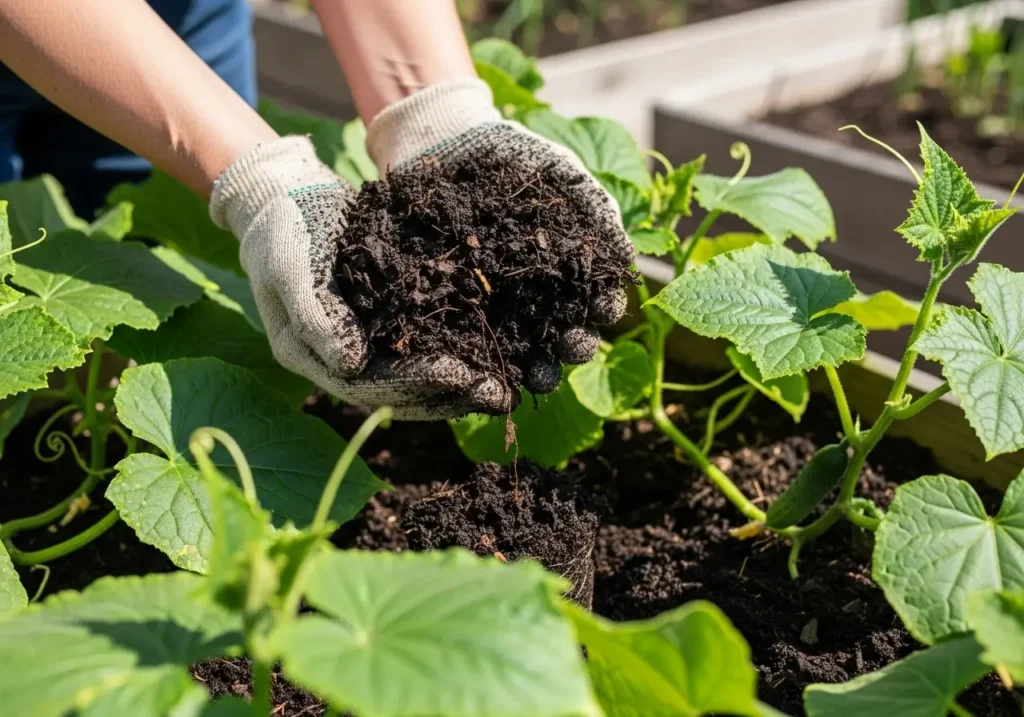
My Lazy Person’s Pest Control
Instead of immediately reaching for the nuclear option, I try this approach:
- Plant flowers nearby to attract good bugs that eat the nasty bugs.
- Use row covers when I need to protect young plants.
- Spray organic stuff like neem oil when things get out of hand.
- Remove and trash any gross plant parts immediately.
Be Proactive, Not Reactive
I used to wait until things went wrong before doing anything. Now I plant varieties that resist diseases (check out my top cucumber varieties for maximum harvest – some are bulletproof), give plants enough space, and stick to routines that keep them happy.
Knowing When to Give Up vs. Keep Fighting
Here’s some tough love: sometimes you just gotta call it quits. If a plant has bacterial wilt or is covered in disease, it’s often better to pull it out and protect the healthy ones. I know it sucks, but think of it as plant triage.
But don’t give up too fast! I’ve saved plenty of plants that looked pretty rough with some TLC. You gotta figure out if the plant can bounce back and give you cucumbers, or if it will just be a resource drain.
Container and Indoor Growing Weirdness
You’ll deal with some unique stuff if you’re growing cucumbers indoors or in pots. Container plants dry out way faster (like, constantly), but at least you can move them around and keep a closer eye on them. Indoor plants often struggle with humidity and might need grow lights.
Setting Your Plants Up for Success
The best way to avoid cucumber plant problems is to make it hard for problems to happen in the first place. That means:
- Give plants room to breathe – crowded plants get sick faster.
- Water consistently, but don’t drown them.
- Use good soil with lots of compost mixed in.
- Check on them daily so you catch issues before they get out of hand.
- Keep things clean by removing dead stuff and debris.
If you want the full scoop on creating the perfect cucumber paradise, check out my complete cucumber growing guide.
The Bottom Line on Cucumber Drama
- Yellow leaves happen – don’t freak out until you figure out why
- Check your plants daily – it’s way easier to fix minor problems
- Most stuff is fixable if you catch it early and know what to do
- Prevention is your best friend – seriously, it beats fixing problems every time
- Good soil fixes most things – I can’t stress this enough
- Sometimes you gotta cut your losses – it’s okay to give up on hopeless plants
What’s Next for Your Cucumber Journey
Look, dealing with cucumber plant problems can feel overwhelming, especially when you’re just starting out. But every gardener has killed their fair share of plants – I definitely have! The difference between a newbie and someone with experience isn’t that experienced gardeners don’t have problems. We just know how to spot, fix, and prevent them better.
Start simple: water consistently, improve your soil, and look at your plants daily. Most cucumber plant diseases and pest issues can be avoided with good basic care.
So what’s going wrong in your cucumber patch right now? I’d love to hear your war stories and help you figure out what’s happening. Drop a comment and let’s solve this cucumber mystery together – gardening is way more fun when we’re all helping each other out!
And remember – you’ve totally got this! Every dead plant is just tuition for the gardening school of life. With a little patience and the correct info, you’ll be growing gorgeous, healthy cucumbers that’ll make your neighbors jealous in no time.
Cucumber Plant Problems FAQ
Why are my cucumber leaves turning yellow?
Yellow cucumber leaves can indicate several issues: overwatering (soggy soil), underwatering (bone dry soil), nutrient deficiency (especially nitrogen), or natural aging of older leaves. Check soil moisture 2 inches down first – if it’s soggy, reduce watering; if dry, increase watering. Yellowing from bottom up usually means watering issues, while yellowing between leaf veins indicates nutrient problems.
What are the most common cucumber plant diseases?
The most common cucumber plant diseases are powdery mildew (white powdery spots on leaves), downy mildew (yellow spots that turn brown), and bacterial wilt (sudden plant death spread by cucumber beetles). These diseases are prevented by watering at soil level only, ensuring proper air circulation, and controlling cucumber beetles with row covers.
How do I get rid of cucumber beetles naturally?
Control cucumber beetles by using row covers early in the season, hand-picking beetles when you see them, using yellow sticky traps, and encouraging beneficial insects with diverse plantings. Cucumber beetles spread bacterial wilt disease, so prevention is crucial for avoiding serious cucumber plant problems.
When should I remove cucumber plants with problems?
Remove cucumber plants immediately if they show signs of bacterial wilt (sudden wilting with milky substance when stem is cut) or extensive fungal disease coverage. However, don’t give up too quickly on plants with minor yellowing or small pest damage – most cucumber plant problems are fixable with proper care and early intervention.

